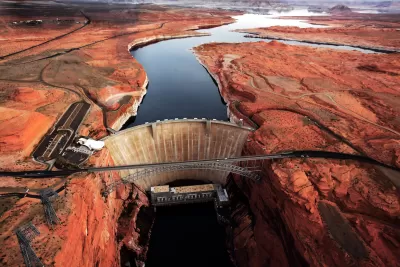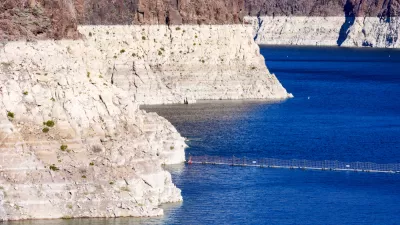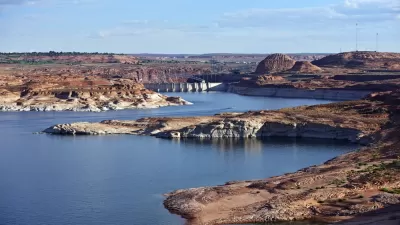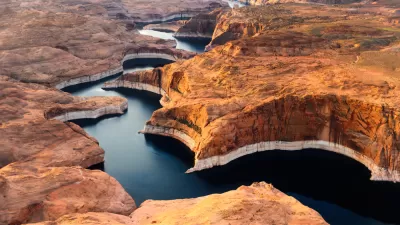California growers and others in the river’s Lower Basin want the federal government to consider draining Lake Powell to conserve more water downstream.

Two major California growers are calling on the Bureau of Reclamation to consider a proposal to remove Glen Canyon Dam, draining Lake Powell and allowing the Colorado River’s water to only accumulate in Lake Mead, farther downstream.
As Ian James explains in the Los Angeles Times, the one-dam proposal was once the purview of environmentalists. Now, some farmers believe removing the dam could help preserve the river’s dwindling resources and prevent the water from being used up by hydropower operations upstream of their agricultural operations in California’s Imperial Valley. “California uses more Colorado River water than any other state. And in the Imperial Valley, the Imperial Irrigation District delivers the single largest share of the river’s water to farmlands that produce crops including hay and vegetables.”
The Colorado River’s shrinking water supply has been a major challenge for the western states that rely on it. Farther upstream, Upper Basin officials—including in Utah, where the state plans to build a new pipeline from Lake Powell—want to see more reductions in usage in the Lower Basin states. See the source article for more details on the dam’s condition and proposals being weighed by federal officials.
FULL STORY: As Colorado River shrinks, California farmers urge ‘one-dam solution’

Study: Maui’s Plan to Convert Vacation Rentals to Long-Term Housing Could Cause Nearly $1 Billion Economic Loss
The plan would reduce visitor accommodation by 25,% resulting in 1,900 jobs lost.

North Texas Transit Leaders Tout Benefits of TOD for Growing Region
At a summit focused on transit-oriented development, policymakers discussed how North Texas’ expanded light rail system can serve as a tool for economic growth.

Using Old Oil and Gas Wells for Green Energy Storage
Penn State researchers have found that repurposing abandoned oil and gas wells for geothermal-assisted compressed-air energy storage can boost efficiency, reduce environmental risks, and support clean energy and job transitions.

Private Donations Propel Early Restoration of Palisades Playground
Los Angeles has secured over $1.3 million in private funding to restore the Pacific Palisades playground months ahead of schedule, creating a modern, accessible space that supports community healing after recent wildfires.

From Blight to Benefit: Early Results From California’s Equitable Cleanup Program
The Equitable Community Revitalization Grant (ECRG) program is reshaping brownfield redevelopment by prioritizing projects in low-income and environmental justice communities, emphasizing equity, transparency, and community benefits.

Planting Relief: Tackling Las Vegas Heat One Tree at a Time
Nevada Plants, a Las Vegas-based nonprofit, is combating the city’s extreme urban heat by giving away trees to residents in underserved neighborhoods, promoting shade, sustainability, and community health.
Urban Design for Planners 1: Software Tools
This six-course series explores essential urban design concepts using open source software and equips planners with the tools they need to participate fully in the urban design process.
Planning for Universal Design
Learn the tools for implementing Universal Design in planning regulations.
Ascent Environmental
Borough of Carlisle
Institute for Housing and Urban Development Studies (IHS)
City of Grandview
Harvard GSD Executive Education
Toledo-Lucas County Plan Commissions
Salt Lake City
NYU Wagner Graduate School of Public Service





























